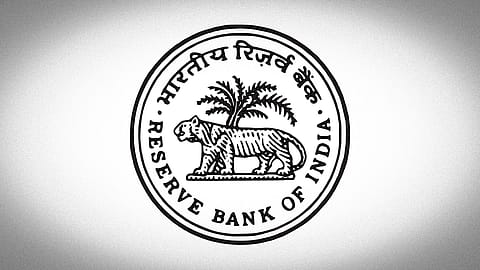Mandate to momentum: RBI frees capital for SFBs; potential to improve ROA by 20–22%
The Reserve Bank of India has reduced the priority sector lending target for small finance banks from 75% to 60%, effective from the financial year 2025–26.

In a strategic regulatory pivot aimed at better aligning small finance banks (SFBs) with universal banking practices, the Reserve Bank of India (RBI) has trimmed the Priority Sector Lending (PSL) target for SFBs from 75% to 60% of Adjusted Net Bank Credit (ANBC) or Credit Equivalent of Off-Balance Sheet Exposures (CEOBE), effective from the financial year 2025–26. This move is consistent with our view that there is a regulatory transition from rule-based to principles-based frameworks, fostering innovation and risk-calibrated growth. It also aligns seamlessly with the regulator’s foundational vision behind the introduction of differentiated banking licences and validates its trust in the SFB sector’s maturity and performance.
This recalibration retains the 40% mandatory sub-sector allocation for agriculture, micro-enterprises, education, and housing, while slashing the flexible PSL component from 35% to 20%. The shift grants SFBs greater operational freedom to deploy up to 20% of their credit in areas of competitive strength, including vehicle loans, loans against property (LAP), personal loans, gold loans, and loans against securities.
A stepping stone for SFBs to de-risk and diversify
The revised guidelines give SFBs increased flexibility to engage in specialised lending that aligns with their strengths—without being restricted by stringent sub-sector caps. It helps reduce the gap in PSL requirements between SFBs and universal banks, which must lend 40% of credit to priority sectors. Moreover, this strategic shift empowers SFBs—and gives them a clear mandate—to cultivate and sharpen their secured‑lending capabilities across the entire spectrum: from designing tailored products and underwriting, to managing risk and collections. This capability-building is essential to compete with private banks, which have traditionally dominated the secured lending segment with deeper expertise, stronger credit culture, robust infrastructure, and more efficient collections mechanisms. In essence, the PSL recalibration is not just a regulatory tweak—it is a launchpad compelling SFBs to evolve their operational DNA.
By recalibrating PSL thresholds, SFBs gain strategic leeway to broaden their portfolio; however, it is essential to curate a product suite that aligns with core strengths and product adjacencies—leveraging offerings that naturally complement existing lines. At the same time, committing to investments in innovative technology—such as AI-powered credit-underwriting engines, digital loan-origination platforms, and robust cloud infrastructure—will optimise workflows and enrich decision-making. These combined advances will furnish SFBs with the competitive agility required to challenge universal banks and NBFCs in the secured lending domain.
Unlocking the deployable capital—SFBs could potentially improve ROA by 30–35 bps:
RBI’s move is expected to free up ~₹40,000–45,000 crore worth of capital—roughly 15% of total advances—that SFBs can reallocate into low-risk and higher-growth sectors. Profitability could get a thrust not only by improving returns from the PSL portfolio but also through expansion into non‑PSL areas like vehicle financing, gold-backed lending, and affordable housing ventures. A reduction of approximately 1–1.25% in credit costs—owing to de-risking in the SFB loan book—could lift ROA by roughly 30–35 basis points, pushing it above 2%.
(INR CR)
Enhancing asset quality & reducing risk:
SFBs have disproportionately utilised unsecured lending and microfinance to meet their 75% PSL requirement. It resulted in rising stress levels—Gross NPAs (GNPAs) for the microfinance sector have almost doubled to 16% in FY25 compared to the previous year, causing "supervisory discomfort" for RBI. Deregulation allows SFBs to shift to safer, collateral-backed lending—housing finance, auto loans, and property loans—to reduce exposure to borrower defaults.
Crucially, the revised mandate keeps the mandatory 40% sub-sector allocation intact—ensuring strong credit flows to agriculture, MSMEs, education, housing, and weaker sections. This maintains the developmental thrust while allowing SFBs to responsibly expand into growing retail segments such as green energy, education, and personal loans. The RBI’s revised PSL guidelines for SFBs balance social inclusion with institutional sustainability. It strategically empowers SFBs to embrace diversified growth, bolster asset quality, and deepen profitability—without relinquishing their key mission of serving underserved communities.
(Pratik Shah is the National Leader, Financial Services at EY India)
(DISCLAIMER: The views and opinions expressed by investment experts on fortuneindia.com are either their own or of their organisations, but not necessarily that of fortuneindia.com and its editorial team. Readers are advised to consult certified experts before taking investment decisions.)